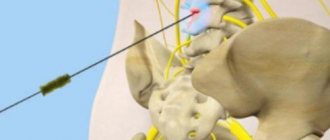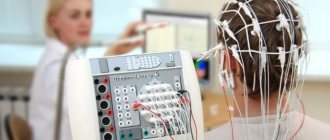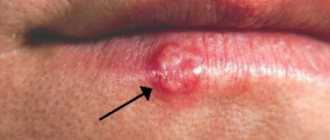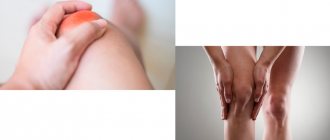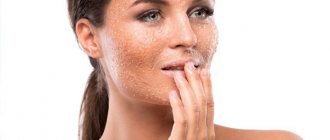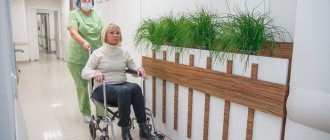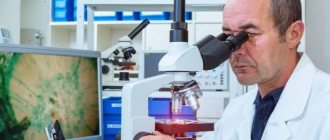For today’s conversation, I chose the problem that we, neurologists, most often encounter in everyday practice. The relevance of back pain is high - it is registered annually in 15-25% of the country's adult population. Between the ages of 30 and 45, back pain is one of the most common causes of disability. However, only 40% of patients seek medical help. It is also known that in a third of patients, acute pain subsequently becomes chronic, which persists for more than 12 weeks.
Types of dorsopathy
Based on the nature of the damage to the spine, diseases are divided into deforming diseases, spondylopathies and others.
Deforming pathologies lead to degradation of intervertebral discs - up to their complete destruction, displacement of the vertebrae. This group includes scoliosis, kyphosis, lordosis. Spondylopathies include inflammatory and infectious lesions of the spine, arthritis, osteochondrosis, and spondylosis. The remaining diseases, including vertebrogenic dorsopathy (pathological changes in the disc with subsequent entrapment of the spinal cord) and back pain caused by other causes, are combined into a separate group. Spinal diseases are localized in different parts - cervical, thoracic or sacrolumbar. Dorsopathy of the cerebral palsy is accompanied by muscle spasms and sometimes cerebral circulatory disorders. The patient may experience dizziness and weakness in the arms. The pain may spread to the forearms and shoulders. The thoracic region suffers much less frequently than others due to its lack of mobility. This is the longest section of the spinal column, and diseases here manifest themselves in the most unexpected ways: in the form of heart pain, chest pain, coughing, weakness in the upper limbs.
The most common case of dorsopathy is damage to the sacrolumbar region. This pathology can be found in any adult. It is asymptomatic, or its signs are so weak that the patient does not pay attention to them. During exacerbations, the patient experiences pain in the lower back (lumbodynia) and lower extremities, and a malfunction of the pelvic organs occurs.
There are cases when the pathology is limited to damage to one vertebra, but polysegmental and widespread dorsopathy are more common. In the first case, the disease affects the entire spine, in the second - several vertebrae in different areas.
What happens to the intervertebral disc during Dorsopathy?
The nucleus pulposus of the disc is under constant pressure. The height of the disc decreases due to the pressure of the body weight, which is in an upright position during the day. When the discs are young and healthy, they contain a lot of water - so much that at night, when they are saturated with moisture and we straighten out, we add up to two centimeters in height.
The “straightening” of the disc occurs due to the properties of the nucleus pulposus and the elasticity of the ligaments. Liquids, as we know, are practically incompressible, so any pressure acting on the core is transmitted in all directions. The annulus fibrosus holds the core, that is, the pressure of the core is balanced by the tension of the annulus fibrosus, the ligaments surrounding the spine and the tone of the back muscles. The opposition of these two forces, according to doctors, is the key to understanding the degenerative-dystrophic osteochondrosis processes occurring in the spine. The muscles also play a huge role in this counteraction, creating a kind of tension field around the spine.
The emergence and development of dorsopathy is promoted by:
– physical inactivity (low motor activity);
– monotonous or meager food;
– constant work in unfavorable weather conditions, when low temperatures are combined with high air humidity;
– vibration;
– an imperceptible uneven load on the spinal column due to a variety of factors (for example, incorrect position of the spine during work and other daily activities);
– prolonged stay of the body in physiologically uncomfortable positions: sitting for many hours, bent over a desk at school, college, home, at work; sitting at the steering wheel of a car, at a computer console, at a drawing board, standing at a machine, at a counter, etc.
As a rule, age-related changes in intervertebral discs appear after 45 - 50 years. However, they can also occur at an earlier age, especially if there have been macro- and microtraumas, infectious lesions, or metabolic disorders. The causes of the disease can be an unfavorable hereditary predisposition, and weakness of the musculoskeletal system, cartilage structure, and muscle corset. The general situation is worsened by excess body weight.
At the same time, the blood supply and provision of nutrients to the tissues adjacent to the spine, vertebral bodies and intervertebral discs is almost 30 times worse than with a rational motor mode. As a result, the content of microelements, enzymes and vitamins in the tissues of the intervertebral discs, ligaments and muscles of the corresponding part of the spine decreases. All this gives rise to the emergence of the entire complex of disorders, which culminates in degenerative-dystrophic changes either in an individual intervertebral disc and vertebra, or in a group of discs and vertebrae, or in the entire spine as a whole.
Over time, the disc loses 70% of its previous properties and can no longer serve as a strong and reliable shock absorber. With age, the soft core of the intervertebral disc loses water and ceases to perform its functions. The mass of the core is reduced, thereby reducing the height of the disk.
The extensibility and elasticity of the disc shell (fibrous ring) also decreases. During this period, small cracks may appear in the fibrous ring around the nucleus and disc, and the substance of the nucleus will begin to press into these cracks. These cracks also appear as a result of malnutrition of the intervertebral discs and stress on the spine.
This is the first stage of the disease - chondrosis, when the pathological process is limited to the disc. It is very difficult to recognize the disease. At the beginning of the disease, a person experiences mild discomfort. X-ray does not show any changes.
Starting from the second stage - dorsopathy, characterized by further spread of the process to the bone base of the spine, adjacent vertebral bodies and intervertebral joints. Further destruction of the fibrous ring occurs, the fixation of the vertebrae among themselves is disrupted, and their pathological mobility appears. Further disc degeneration inevitably leads to a decrease in the height of the intervertebral space, thereby compressing the neurovascular endings, blood and lymphatic vessels, resulting in increased pain.
In the third stage of the disease, if a complete rupture of the fibrous ring occurs (for example, as a result of significant physical activity - heavy lifting), intervertebral hernias are formed (the deformed nucleus pulposus breaks through (falls out) through the fibrous ring outside the disc). Under pressure from the hernia, the irritated nerves send impulses to the central nervous system, and the person experiences severe pain. During this period of the disease, a fixed deformity of the affected parts of the spine may develop in the form of kyphosis (convexity of the spine backward), lordosis (bending of the spine forward) and the initial stage of scoliosis (lateral curvatures) of the spine. The physiological line of the spine is disrupted.
The fourth stage is characterized by painful compaction and displacement of the vertebrae. A deformed intervertebral disc does not provide complete connection of the vertebral bodies, and thus, slight displacements occur relative to each other, which, in turn, causes a reaction of the surrounding paravertebral muscles, which painfully contract and spasm.
The result is a restriction of movement in a specific segment, called a “blockade”. Sometimes such blockades occur suddenly. For example, in the cervical spine when turning the head - in bed, when reversing a car, or when moving the head suddenly (during a car collision). “Rejuvenation” of cervical osteochondrosis is associated with an intense increase in the frequency of motor vehicle injuries of the spine.
As a result of the described changes in the lumbar spine, the vertebrae are displaced posteriorly (pseudospondylolisthesis, or retrolisthesis), and in the cervical spine, subluxations occur. Feelings of pain and discomfort in the back or neck tend to intensify in uncomfortable positions. The connection between the vertebrae is disrupted, and the spine loses its flexibility and mobility.
If this entire process continues, which is inevitable if the load on the spine continues, then the vertebrae react with the formation of pathological bone growths (osteophytes), narrowing the intervertebral foramina. All this leads to irritation, compression and inflammation of the nerve roots (sciatica), vasospasm (impaired lymph circulation, arterial and venous circulation in the spine), compression (compression) of the spinal cord, resulting in damage to the central and peripheral nervous system.
A reduction in the space between the vertebral bodies leads to the development of a deforming disease of the spine, spondyloarthrosis (arthrosis of the intervertebral joints). The disease leads to a real disaster: motor activity decreases, the mobility of the spine is impaired, sudden movements cause acute, sometimes literally unbearable pain. In advanced cases, disability may occur at this stage of the disease.
All four stages of dorsopathy are inherent in any type of dorsopathy - cervical, thoracic, lumbosacral. The largest number of people suffer from dorsopathy of the cervical spine, since 40% of the height of the cervical spine falls on cartilaginous intervertebral joints, while in the thoracic region they account for only 20%, and in the lumbar region - about 33%. If we compare the specific loads on the discs, then in the cervical region it is 11 kg/sq. cm, and in the lumbar region - 9.5 kg/sq. cm. Therefore, the neck is most susceptible to this disease.
By taking on the weight of the head (support function), the cervical spine largely neutralizes shocks and concussions of the brain. The cervical spine is the most mobile, since the neck provides a large range of movement of the head, and therefore its muscles get tired much faster than the muscles of the rest of the back corset. This leads to accelerated wear of the intervertebral discs of the cervical spine. Degenerative changes in the discs are more common in the most mobile lower cervical parts of the spine (at the level of the 5th - 7th cervical vertebrae).
The cervical spine differs from other sections primarily in that, in addition to the canal for the spinal cord, there is a canal for the vertebral artery. At the level of the 6th cervical vertebra, the artery enters the canal of the transverse processes, and at the level of the 2nd vertebra it exits and, penetrating the cranial cavity, participates in the blood supply to the brain.
With pathological changes in the cervical spine, the vertebral artery spasms, thereby reducing the flow of blood to the brain. In addition, the vertebral artery is intertwined with fibers of the sympathetic nerve, and its functions include the transmission of pain signals. With osteochondrosis of the cervical spine, when the nerve fibers are irritated, a stream of pain impulses hits the brain. It is as a result of these features of the cervical spine that at the slightest changes in it we are tormented by headaches, weakness, increased muscle fatigue, and sleep disturbances.
Noise in the ears, numbness of the fingers, weakness of the hands, discomfort and pain in the arms, in the scapula, shoulder, in the heart area, impaired hearing, vision, fluctuations in blood pressure, impaired coordination of movements, dizziness and even fainting (syncope) - these are also neurological manifestations of osteochondrosis of the cervical spine.
Damage to the intervertebral discs with subsequent spondyloarthrosis of the lower parts of the cervical spine can affect the nerve roots, the fibers of which lead to the shoulder joints and upper limbs. Pain from the cervical spine radiates to the shoulder joint and arm, sensory disturbances occur, and the fingers of the affected hand become unruly. If the nerves serving the shoulder joint are damaged, its mobility is limited.
It is known that all the controlling and controlling neural connections of the brain with our organs pass through the spinal cord. As a result of dorsopathy (due to compression, that is, compression of the spinal cord), this connection is disrupted, the functions of vital organs, that is, the work of our entire body, are disrupted. That is why the spine is called the pillar of life.
To diagnose spinal diseases, clinical and radiological studies are carried out, sometimes using contrast agents (discography, myelography) and computed tomography and magnetic resonance imaging methods.
Causes of pathology
Most often, back pain occurs against the background of arthrosis and arthritis, with abnormal development of the spine, which leads to degenerative processes in the discs and vertebrae. Other causes of dorsopathy are known:
- overweight;
- bad habits: smoking, taking drugs, drinking alcohol, etc.;
- violation of the diet, errors in compiling the daily diet, poor quality of products;
- diabetes;
- heredity;
- spinal cord infection, etc.
All of these factors cause irreversible changes in the shape of the vertebrae and the height of the intervertebral discs. The paravertebral tissues become inflamed, pinched nerve fibers of the spinal cord and muscle spasms are observed.
Why does my back hurt?
As soon as the first man got up from all fours and raised his head proudly, he doomed all his descendants to suffering associated with the spine. The spine in four-legged animals is located horizontally and serves to balance all parts of the body. Such a spine remains in ideal condition for a long time and can withstand any stress, tension and exposure to adverse factors. In humans, the spine began to play the role of a rod, or column, and turned into that part of the body that is very easy to disable. Numerous modern studies have shown that pathological changes in the spine are not inherent to individual people or groups of people, but to all of humanity as a biological species. These changes lead to the fact that by the age of fifty, approximately 80% of men and 60% of women suffer from spinal diseases, and the onset of clinical manifestations of the disease falls on the most working period of life, on average 35 years. The most common cause of back pain is dorsopathies.
Symptoms of dorsopathy
Signs of dorsopathy depend on its location. If the cervical spine is affected, the patient experiences pain in the neck and shoulders. He complains of dizziness, flashing colored spots before his eyes, tinnitus, and headache. The muscles of the neck and shoulder girdle are tense, and there is numbness in the arms.
Thoracic dorsopathy is accompanied by back pain radiating to the heart and internal organs. Pain may increase during deep breaths. All this misleads the patient, and he may waste time doing, for example, self-medication of the stomach. As thoracic dorsopathy syndrome develops, it leads to disruption of respiratory function and the functioning of the heart muscle.
The lumbar region of the spine differs from the thoracic region in greater mobility, and therefore is exposed to various lesions more often. Dorsopathy of this zone is accompanied by:
- lower back pain radiating to the buttocks, thighs, legs and feet;
- decreased sensitivity in the lower extremities - up to complete immobility;
- disruption of the functioning of organs located in the pelvic cavity. In advanced cases, the patient cannot control the rectum and bladder.
Other symptoms of spinal dorsopathy include muscle weakness, body aches, dry skin, loss of muscle mass in the arms and legs, and a feeling of fatigue that does not go away after a long period of rest.
Diagnosis of spinal dorsopathy
The initial examination of the patient is carried out by a neurologist. First, he interviews the patient and performs a neurological examination. The doctor checks the muscle strength of the limbs, evaluates the reactivity of the skin, and palpates the spine to detect pain points.
After this, the neurologist refers the patient to radiation diagnostics: radiography, MRI or CT. Depending on the results obtained, the neurologist may additionally prescribe:
- biopsy;
- lumbar puncture;
- spinal scintigraphy (study of metabolism in bone tissue), etc.
The listed studies are carried out only after studying the results of previous examinations and for special indications: with their help, the diagnosis of secondary dorsopathy is confirmed or excluded. If the cause of the pain cannot be established, it is generally accepted that it is deforming unspecified dorsopathy.
If the pathology of the spine and internal organs is not confirmed, and the patient’s back hurts, it is possible that this is muscular dorsopathy resulting from overload or hypothermia.
Treatment of dorsopathy with therapeutic anti-inflammatory patch DORSAPLAST
The therapeutic pain-relieving anti-inflammatory patch DORSAPLAST has shown high effectiveness in the treatment of many types of dorsopathy.
Thanks to the simultaneous influence of two physiotherapeutic factors - deep soft warming heat of infrared radiation and the influence of a magnetic field with specially selected characteristics - this innovative drug allows you to relieve pain and inflammation, improve blood circulation in the affected area, and reduce the dose of painkillers and anti-inflammatory drugs.
Therapeutic pain-relieving anti-inflammatory patch DORSAPLAST can be used both in the complex treatment of dorsopathy and in monotherapy of many types of dorsopathy . The patch is applied to the cervical, thoracic or lumbar spine, depending on the type of disease and location of pain.
To relieve acute symptoms in the treatment of dorsopathy, a therapeutic patch is used for 3 to 5 days. The duration of the course of treatment is from 9 days. It is usually recommended to use the treatment patch in the morning for 12 hours, but it can also be used at night.
High efficiency, unique composition, long-term (up to 12 hours!) therapeutic effects, ease of use and affordable price make DORSAPLAST the drug of choice in the treatment of most types of dorsopathy of various etiologies.
Read more about DORSAPLAST
Treatment options
In general, spinal dorsopathy and its complications can be treated with medication. Surgical intervention is rarely used: in cases of severe pain, severe limitations in functionality and the absence of positive results from conservative treatment.
Drug treatment of dorsopathy involves taking NSAIDs: they suppress inflammatory processes in the area of the affected vertebrae and help reduce pain. To relax the back muscles, the patient is prescribed muscle relaxants. When treating nonspecific dorsopathy the following is used:
- Manual therapy and massage. With their help, blocking of the lumbosacral joints is eliminated.
- Transcutaneous electrical neurostimulation on the paravertebral area of the back.
During the period of remission, physical therapy is permitted. Classes (group or individual) are conducted under the guidance of a doctor or instructor. The task of exercise therapy is to teach the patient a rational motor regimen and return him to his usual professional and everyday motor activities. Patients with chronic pain learn to overcome their fear of movement. Special exercises strengthen the muscles of the lower back.
When dorsopathy is accompanied by psychoemotional disorders, psychological correction is carried out.
If conservative treatment does not have an effect, neurological complications of dorsopathy progress, compression myelopathy occurs, defecation and urination functions are impaired, and surgery is prescribed.
Classification of dorsopathies
Dorsopathy can be caused by degenerative and inflammatory processes of various structures of the spine: intervertebral disc, intervertebral joints, spinal ligaments, paravertebral muscles. Involvement of the spinal roots or spinal cord in the process produces focal neurological symptoms.
According to international standards, all types of dorsopathy can be divided into three large groups:
- deforming dorsopathies - pathological deformations of the spinal column caused by dystrophic changes in the intervertebral discs (without violating the integrity of the fibrous ring, without protrusions and hernias of the nucleus pulposus). This group includes lordosis, kyphosis, scoliosis, spondylolisthesis (displacement of one of the vertebrae relative to another), osteochondrosis and subluxations;
- spondylopathies - include all types of inflammatory, degenerative and traumatic spondylopathies;
- other dorsopathies are discogenic dorsopathies with progressive degenerative-dystrophic changes in the intervertebral discs (fibrous ring and nucleus pulposus) with protrusion, intervertebral hernias, as well as various types of dorsalgia, i.e. pain syndromes in the neck, trunk and limbs without displacement of the intervertebral discs, without dysfunction of the spinal roots or spinal cord.
Spinal traction
Clinical studies have shown the high effectiveness of spinal traction treatment. During the procedure, the height of the intervertebral discs increases. Negative pressure is created in the intervertebral space, retracting the protruding part of the disc. The pressure on the nerve roots decreases or disappears completely.
During traction, conditions are created that are favorable for the regeneration of the torn area of the annulus fibrosus, and blood flow improves. The shock-absorbing properties of the vertebrae are restored, the load is removed from the muscles and spine.
Traction is carried out after examining the patient on MRI or CT on a multifunctional traction-massage, inversion tables and Professor Velikanov’s device. The patient is placed on the simulator, the limbs are secured with belts, and the spine is stretched using a sliding table or belt traction. All parameters of the procedure are determined by the doctor, taking into account the characteristics of the patient’s body.
You can stretch the spine yourself - using a horizontal bar. The exercise is useful, but it practically does not affect the cervical and first thoracic vertebrae.
Prevention of dorsopathy
To protect the spine from diseases, you need to move more - but without overload, dress for the weather and eat right. If acute pain occurs in the spine, it is necessary to give the body a rest. You can only lie on a hard, flat bed. Duration of rest - from one to several days.
If you already have a spinal disease, you should not lift or carry heavy objects. A healthy person needs to learn how to work with a load correctly: when lifting, you need to bend not your back, but your legs and not allow your torso to turn.
The doctors of our clinic have modern equipment for diagnosing dorsopathy and are proficient in all methods of its treatment. They are ready to give recommendations on how to prevent dorsopathy. You can make an appointment on the website or by phone.
